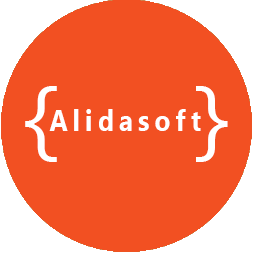How to Start Studying AWS Cloud Computing
Welcome to the exciting realm of AWS cloud computing! If you’re eager to dive into the world of cloud technology but aren’t sure where to begin, you’re in the right place. This in-depth guide will walk you through the steps to start studying AWS cloud computing, providing valuable insights and practical tips for a successful learning journey.
Introduction: Navigating the AWS Cloud Landscape
AWS (Amazon Web Services) is a powerhouse in the cloud computing domain, offering a vast array of services and solutions. Whether you’re a seasoned IT professional or a newcomer to the tech scene, mastering AWS can open doors to endless possibilities. Let’s embark on this learning journey together.
1. Understanding the Basics
– Define Cloud Computing:
- Gain a solid understanding of cloud computing fundamentals. Know what the cloud is, its advantages, and common cloud service models (IaaS, PaaS, SaaS).
– Introduction to AWS:
- Familiarize yourself with AWS basics, including its history, core services, and the global infrastructure that powers the cloud.
2. Setting Up Your AWS Account
– Creating an AWS Account:
- Follow step-by-step instructions to create your AWS account. Learn about the AWS Free Tier, providing you with limited free access to a wide range of AWS services.
– Navigating the AWS Management Console:
- Explore the AWS Management Console, your central hub for accessing and managing AWS services. Understand the console’s layout and key features.
3. Exploring Foundational Services
– EC2 (Elastic Compute Cloud):
- Dive into EC2, a fundamental AWS service for scalable computing capacity. Learn how to launch virtual servers in the cloud.
– S3 (Simple Storage Service):
- Understand the basics of S3, AWS’s storage service. Explore how to store and retrieve any amount of data from anywhere on the web.
4. Structuring Your Learning Path
– AWS Certification Tracks:
- Explore the various AWS certification tracks available. Choose a certification that aligns with your career goals, such as AWS Certified Solutions Architect or AWS Certified Developer.
– Online Courses and Documentation:
- Leverage online courses offered by AWS and third-party platforms. Dive into official AWS documentation for in-depth insights into each service.
5. Hands-On Practice and Projects
– Create a Virtual Lab:
- Set up a virtual lab environment using AWS. Practice launching instances, configuring services, and securing your resources.
– Real-world Projects:
- Apply your knowledge to real-world projects. Build a web application, set up a secure website, or create a data storage solution.
6. Join the AWS Community
– Forums and Discussion Boards:
- Engage with the AWS community through forums and discussion boards. Share your experiences, ask questions, and learn from others.
– AWS Events and Meetups:
- Attend AWS events, webinars, and local meetups. Connect with professionals, network, and stay updated on the latest trends.
Summary: Your AWS Learning Blueprint
Congratulations on taking the first steps into the dynamic world of AWS cloud computing! Let’s recap the key points:
- Understanding the Basics:
- Grasp fundamental concepts of cloud computing and familiarize yourself with AWS.
- Setting Up Your AWS Account:
- Create your AWS account and explore the AWS Management Console.
- Exploring Foundational Services:
- Dive into core services like EC2 and S3 for hands-on learning.
- Structuring Your Learning Path:
- Choose an AWS certification track and complement it with online courses and documentation.
- Hands-On Practice and Projects:
- Build a virtual lab, practice, and undertake real-world projects to solidify your skills.
- Join the AWS Community:
- Engage with forums, attend events, and connect with the vibrant AWS community.
Remember, learning AWS is a continuous journey. Embrace challenges, stay curious, and enjoy the process of mastering cloud computing with AWS.

